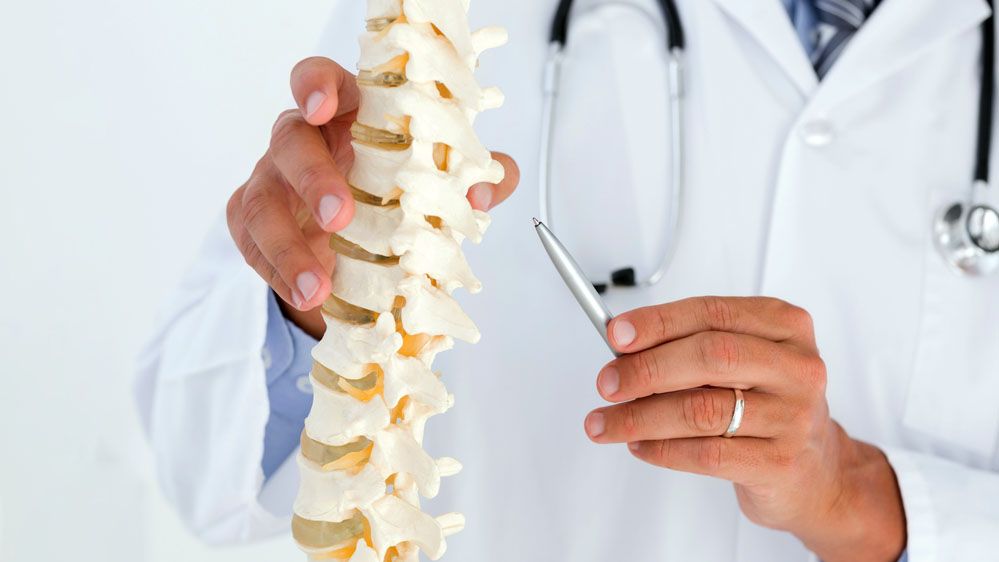Spinal Surgery
Persistent back, neck or nerve pain? You’re not alone: Experts estimate that nearly 80% of U.S. men and women will be affected by spine-related pain at some point in their lives. It can happen at home or at work and to just about anyone who sits too long or moves without proper body mechanics.
Whether you experienced a recent injury or have a chronic condition, Beaufort Memorial has your back. The Advanced Orthopedics and Spine Program at Beaufort Memorial brings together state-of-the-art technologies and spine care experts to address a range of conditions that cause neck and back pain.
Physicians and their care teams address the individual causes of pain, emphasizing nonsurgical treatment options in advance of spine surgery. If surgery is necessary to address your pain, the preoperative assessment clinic will prepare you with individualized education and address any health issues to ensure as safe and stress-free experience as possible.
The board-certified and fellowship-trained surgeons at Beaufort Memorial use advanced techniques and technologies to minimize disruption of surrounding tissue, resulting in a faster recovery time with less pain. Some patients are even able to return home to recover the same day as their surgery. Those who need additional care, are placed on a special floor of the hospital with experienced orthopedic nursing and rehabilitation staff.
Call 843-522-7435 to discuss your symptoms or request an appointment with a board-certified spine specialist at Beaufort Memorial.

Comprehensive Solutions for Neck and Back Problems
Our spine care specialists relieve a variety of spine and neck issues that cause debilitating pain and interfere with daily life, including:
- Fractures
- Compressed or herniated disks
- Osteoarthritis
- Sciatica
- Spinal stenosis
- Slipped disc (spondylolisthesis)
- Pinched nerve (radiculopathy)
- Spinal deformities
For conditions that require surgical intervention, we offer:
- Cervical discectomy — The surgeon removes a piece of damaged disc tissue in the neck area to relieve pressure on the spinal cord or nerve roots.
- Cervical disc replacement — During this neck surgery, a damaged disc is replaced with an artificial one. The precision engineering of the disc replacement gives almost the full range of motion of a healthy disc.
- Cervical decompression or fusion — The surgeon removes a disc and inserts a small wedge of bone between two vertebrae to restore disc space. Over time, the two vertebrae fuse together into a single solid structure.
- Corpectomy — Complete decompression of the spinal canal. The middle portion of the vertebra and its adjacent discs are removed to decompress the cervical spinal cord and nerve roots.
- Decompression — A surgical procedure to stabilize the spine by fusing two or more vertebrae using bone grafts, metal rods and metal screws.
- Discectomy — The removal of the herniated portion of a disc. This procedure relieves the pressure on nearby nerves as they exit the spinal canal.
- Disc replacement — Artificial disc replacement substitutes a mechanical device for an intervertebral disc in the spine to take pressure off the nerve roots and spinal cord.
- eXtreme lateral interbody fusion (XLIF) — Treats a variety of lower spine disorders, including degenerative disk, scoliosis and spondylolisthesis (disk slipping forward) with a surgical technique that protects major back muscles, bones and ligaments from damage.
- Kyphoplasty — To treat painful, progressive vertebral compression fractures, this minimally invasive spinal surgical procedure uses balloons to move the fractured vertebra into the correct position. Bone cement is then injected to stabilize the area.
- Laminoplasty — Often performed on patients suffering from spinal stenosis in the neck. This procedure creates more space for the spinal cord and roots. It relieves pressure on the spinal canal's diameter, making room for the spinal cord.
- Lumbar discectomy — In this procedure, a surgeon typically only removes the portion of the disc that is causing a problem, not the entire disc.
- Posterior cervical foraminotomy/discectomy — Some cases of herniated discs or bone spurs that occur in the neck only affect the nerve roots. This procedure avoids spinal fusion and can minimize recovery time.
- Spinal fusion — A surgical procedure that permanently connects two or more vertebrae to eliminate motion and relieve pain.
Spine Surgery Recovery and Rehabilitation
Following spinal surgery, our dedicated orthopedic rehabilitation program can help support a fast and smooth recovery with home and outpatient care. Our skilled team of physical and occupational therapists will work closely with you to create a personalized plan based on your unique needs and goals. We’re committed to helping restore strength and mobility, so you can get back to what you love.
